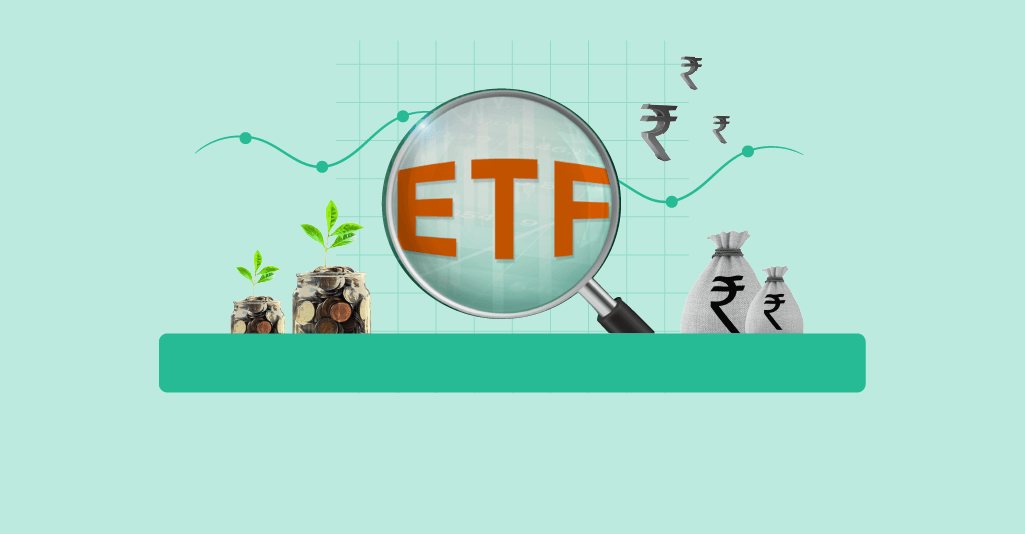
Investing in Exchange-Traded Funds (ETFs) is one of the smartest ways to build long-term wealth. Whether you’re just starting out or you’re a seasoned investor, ETFs provide a diversified, cost-effective, and liquid investment route. In this guide, we’ll explore the best ETFs available in India and the USA, while providing actionable tips, comparisons, and frequently asked questions.
“The stock market is filled with individuals who know the price of everything, but the value of nothing.” – Philip Fisher
What Are ETFs?
ETFs (Exchange-Traded Funds) are marketable securities that track an index, commodity, bonds, or a mix of assets. Unlike mutual funds, ETFs trade like stocks, meaning you can buy and sell them during market hours. This flexibility makes them a preferred choice for investors seeking both short-term gains and long-term portfolio growth. Additionally, ETFs often come with lower expense ratios, making them a cost-effective way to gain broad market exposure.
Key Benefits of ETFs:
- Diversification: One ETF can offer exposure to dozens or even hundreds of companies.
- Lower Costs: ETFs usually have lower expense ratios than mutual funds.
- Liquidity: You can trade ETFs anytime during the trading session.
- Transparency: Daily disclosure of holdings.
- Tax Efficiency: ETFs are more tax-efficient than mutual funds due to their unique structure.
Best ETFs to Invest in India
India’s ETF market is expanding rapidly, offering various opportunities across asset classes.
1. Nifty 50 ETFs
Nifty 50 ETFs track the performance of the Nifty 50 index, which represents the top 50 large-cap companies listed on the NSE. They offer a simple and cost-effective way to invest in India’s most established and financially sound businesses.
Why Invest?
- Tracks the Nifty 50 index, offering exposure to India’s top 50 large-cap companies.
Top Picks:
- Nippon India ETF Nifty 50
- ICICI Prudential Nifty 50 ETF
Expense Ratio: ~0.05% – 0.10%
Liquidity: High
Risk Level: Moderate
2. Sensex ETFs
Sensex ETFs mirror the performance of the BSE Sensex, comprising 30 of the largest and most stable companies in India. They are ideal for investors looking for steady growth through exposure to blue-chip stocks.
Why Invest?
- Reflects the performance of 30 well-established companies on the BSE.
Top Picks:
- SBI ETF Sensex
- HDFC Sensex ETF
Expense Ratio: ~0.05%
Liquidity: High
Risk Level: Moderate
3. ICICI Prudential NASDAQ 100 ETF
The ICICI Prudential NASDAQ 100 ETF provides Indian investors with access to the top 100 non-financial companies listed on the NASDAQ, including global tech giants. It’s a smart choice for those seeking international diversification and exposure to high-growth U.S. technology stocks.
Why Invest?
- Provides Indian investors exposure to top 100 non-financial U.S. companies.
Expense Ratio: ~0.54%
Liquidity: Medium
Risk Level: High
4. Gold ETFs
Gold ETFs are investment funds that track the price of physical gold and are traded on stock exchanges like regular shares. They offer a convenient and secure way to invest in gold without the need to store it physically, making them a popular hedge against inflation and market volatility.
Why Invest?
- Acts as a hedge against inflation and market volatility.
Top Picks:
- SBI Gold ETF
- Nippon India Gold ETF
Expense Ratio: ~0.50%
Liquidity: Medium
Risk Level: Low to Moderate
5. Government Bond ETFs
Government Bond ETFs invest in sovereign bonds issued by the government, offering a reliable source of fixed income. They are ideal for conservative investors seeking lower risk and more stability in their portfolios.
Why Invest?
- Suitable for conservative investors seeking stable returns.
Top Picks:
- Nippon India ETF Long Term Gilt
- Bharat Bond ETF
Expense Ratio: ~0.10%
Liquidity: Medium
Risk Level: Low
Best ETFs to Invest in the USA
The U.S. market is home to some of the most diverse and globally respected ETFs.
1. SPDR S&P 500 ETF (SPY)
Why Invest?
- Tracks the top 500 U.S. companies listed on the S&P 500 index.
Expense Ratio: ~0.09%
Liquidity: High
Risk Level: Moderate
2. Invesco QQQ ETF (QQQ)
Why Invest?
- Offers exposure to the NASDAQ-100, dominated by tech giants like Apple and Google.
Expense Ratio: ~0.20%
Liquidity: High
Risk Level: High
3. Vanguard Total Stock Market ETF (VTI)
Why Invest?
- Covers entire U.S. stock market, including small-, mid-, and large-cap companies.
Expense Ratio: ~0.03%
Liquidity: High
Risk Level: Moderate
4. iShares MSCI Emerging Markets ETF (EEM)
Why Invest?
- Access to high-growth potential in emerging economies outside the U.S.
Expense Ratio: ~0.69%
Liquidity: High
Risk Level: High
5. Schwab U.S. Dividend Equity ETF (SCHD)
Why Invest?
- Focuses on high-quality dividend-paying stocks.
Expense Ratio: ~0.06%
Liquidity: High
Risk Level: Low to Moderate
Quick Comparison Table: India vs USA ETFs
| ETF Category | Example ETF | Region | Expense Ratio | Risk Level |
|---|---|---|---|---|
| Large-Cap Equity | Nifty 50, SPY | India/USA | 0.05%–0.10% | Moderate |
| Technology-Focused | NASDAQ 100, QQQ | India/USA | 0.20%–0.54% | High |
| Diversified Market | VTI | USA | 0.03% | Moderate |
| Emerging Markets | EEM | USA | 0.69% | High |
| Gold and Bonds | SBI Gold ETF, Bharat Bond | India | 0.10%–0.50% | Low to Moderate |
How to Choose the Right ETF
Making the right investment begins with clarity:
1. Define Your Investment Goals
- Are you seeking growth, dividends, or capital preservation?
2. Compare Expense Ratios
- Lower fees = better long-term returns.
3. Review Liquidity
- Opt for ETFs with high trading volumes for smoother transactions.
4. Understand the Underlying Index
- Know what the ETF is tracking and why it suits your objective.
5. Evaluate Historical Performance
- Past trends provide context, though not guarantees.
6. Consider Tax Implications
- ETFs are more tax-friendly, but this varies by location and product.
Frequently Asked Questions (FAQs)
Q1: Are ETFs better than mutual funds?
ETFs usually have lower costs, better tax efficiency, and more flexibility than mutual funds.
Q2: Can I invest in U.S. ETFs from India?
Yes, through international brokerage accounts or feeder funds offered by Indian AMCs.
Q3: Are ETFs safe for beginners?
Yes, especially if you stick with diversified ETFs like Nifty 50 or SPY.
Q4: How much should I invest in ETFs?
Start with an amount you’re comfortable with and increase gradually as you understand your risk profile.
Q5: Do ETFs pay dividends?
Yes, many ETFs pay out dividends periodically.
Final Thoughts
ETFs provide a versatile and efficient way to gain exposure to markets in India and the USA. Whether your goal is stability through government bonds or aggressive growth via NASDAQ 100, there’s an ETF for you. The key lies in matching your objectives with the right instruments.
Invest smartly, stay diversified, and remember that long-term discipline often outweighs short-term speculation.



